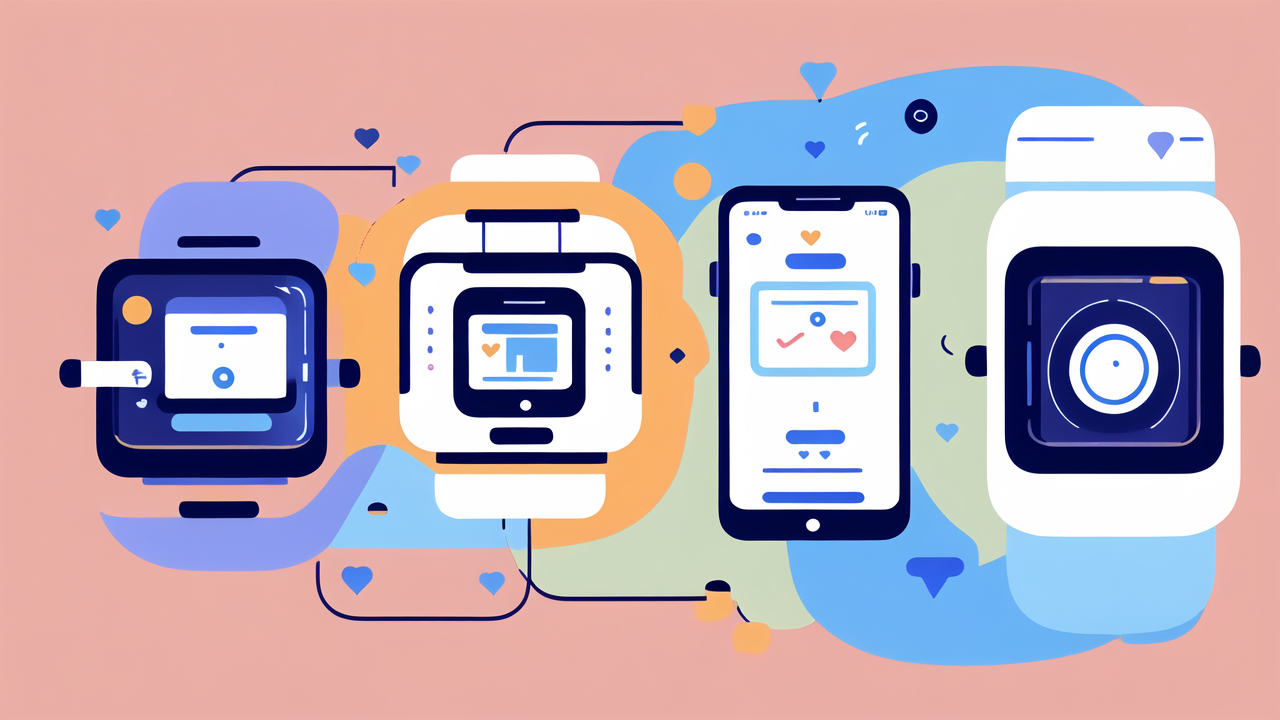The Rise of Wearable Health Monitoring Devices in the United States
What Are Health Monitors?
Health monitors are wearable devices that track various aspects of our well-being. They come in many forms, from smartwatches to fitness bands. These gadgets can measure heart rate, sleep patterns, and daily steps.

Some advanced monitors even track blood oxygen levels and stress. They use sensors to collect data about our bodies. This info is then sent to our phones or computers for analysis.
Health monitors help us understand our bodies better. They can spot trends and alert us to potential issues. Many people use them to set and reach fitness goals.
The Evolution of Wearable Health Tech
Wearable health tech has come a long way. It started with simple pedometers that counted steps. Now, we have smart devices that do much more.
Early fitness trackers were bulky and had limited features. Today's wearables are sleek and packed with sensors. They can monitor heart health, sleep quality, and even detect falls.
Smartwatches now offer ECG readings and blood oxygen monitoring. Some devices can track menstrual cycles and fertility. The tech keeps improving, making devices more accurate and useful.
Regulatory Landscape for Health Monitoring Devices
As health monitors become more advanced, regulations have evolved. The FDA plays a key role in overseeing these devices in the US.
Some wearables are considered medical devices. These need FDA approval before they can be sold. Others are classified as general wellness products. These face less strict rules.
The FDA has created guidelines for health apps and wearables. They aim to ensure safety and effectiveness. Companies must prove their devices work as claimed.
Privacy is a big concern with health data. Laws like HIPAA protect user information. Companies must follow strict rules to keep data safe.
Fashion Meets Function: Health Monitoring Wearables and the Wellness Industry
Merging Style with Health: A New Trend
Health monitors are no longer just functional devices. They've become fashion statements too. Designers are creating stylish wearables that look good and track health.

Brands like Fitbit and Apple offer customizable bands and faces. This lets users match their devices to their outfits. Some luxury watchmakers now include health features in their products.
Jewelry-like fitness trackers are gaining popularity. These blend in with other accessories. Smart rings and pendants offer discreet health monitoring options.
The goal is to make health tech something people want to wear all the time. By making devices fashionable, companies hope to increase adoption and use.
Impact of Fashion on Health Monitoring Adoption
Fashion has played a big role in making health monitors popular. Stylish devices are more likely to be worn regularly. This leads to better health tracking and insights.
When wearables look good, people are proud to show them off. This creates a social aspect to health monitoring. Friends and family might be inspired to try wearables too.
Fashion-forward health monitors appeal to a wider audience. They're not just for fitness enthusiasts anymore. Now, anyone interested in style and wellness can find a device they like.
By making health tech fashionable, companies have expanded their market. This has led to more innovation and competition in the industry.
The Role of Wearable Tech in Promoting Wellness
Wearable tech has become a key player in the wellness movement. These devices do more than just track data. They actively encourage healthy habits.
Many wearables send reminders to move, drink water, or take breaks. Some offer guided breathing exercises to reduce stress. Others track sleep and suggest ways to improve rest.
Fitness challenges and achievement badges motivate users to stay active. Social features let friends compete and support each other's health goals.
Some health insurers now offer incentives for using wearables. This shows how these devices are seen as tools for preventive care.
The Future of Fashion and Health: Innovations and Predictions
The Next Generation of Wearable Health Monitors
The future of wearable health tech looks exciting. We can expect devices to become even more advanced and less invasive.

Smart fabrics may soon replace traditional wearables. Clothes could monitor our health without the need for separate devices. Imagine a shirt that tracks your heart rate and posture.
Implantable sensors are another possibility. These tiny devices could provide constant health monitoring. They might detect issues before symptoms appear.
AI will play a bigger role in health analysis. Wearables may predict health problems based on subtle changes in data. This could lead to earlier interventions and better outcomes.
Challenges and Opportunities in the Wearable Health Sector
The wearable health sector faces several challenges. Accuracy is still an issue for some measurements. Companies need to improve their sensors and algorithms.
Battery life remains a concern for many users. Future devices will need to last longer or charge faster. Wireless charging and energy harvesting could help solve this problem.
Data security and privacy are ongoing issues. As devices collect more sensitive info, protecting it becomes crucial. Companies must invest in robust security measures.
Despite these challenges, opportunities abound. The market for health wearables is growing fast. There's room for new players and innovative products.
Personalized health insights are a promising area. By combining data from various sources, wearables could offer tailored advice. This could revolutionize preventive healthcare.
Ethical Considerations in Health Monitoring Wearables
As health wearables become more powerful, ethical questions arise. We need to consider how this technology affects privacy and autonomy.
There's a risk of overreliance on wearable data. Users might ignore other health signals or avoid seeing doctors. It's important to see these devices as tools, not replacements for medical care.
The use of health data by employers or insurers raises concerns. There could be discrimination based on this information. Clear regulations are needed to protect users' rights.
Mental health impacts are another consideration. Constant health monitoring might increase anxiety for some people. Designers need to find ways to provide info without causing stress.
As we move forward, balancing innovation with ethics will be key. The goal should be to create wearables that improve lives without compromising values.




Leave a comment
This site is protected by hCaptcha and the hCaptcha Privacy Policy and Terms of Service apply.